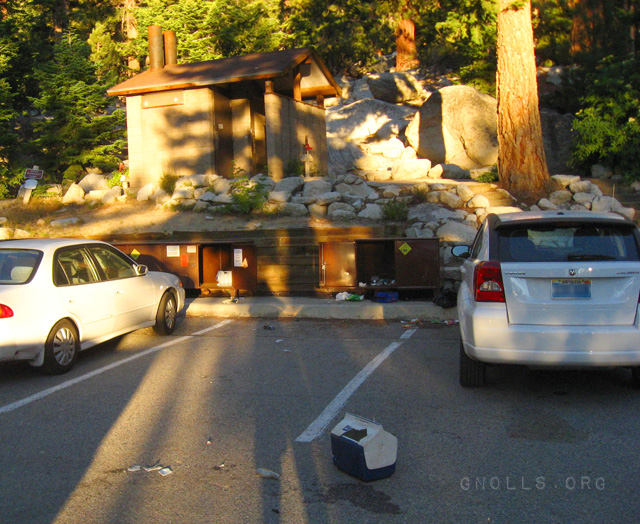Favorite Articles of the Moment
Disclaimer
• Your life and health are your own responsibility.
• Your decisions to act (or not act) based on information or advice anyone provides you—including me—are your own responsibility.
Recent Articles
-
We Win! TIME Magazine Officially Recants (“Eat Butter…Don’t Blame Fat”), And Quotes Me
-
What Is Hunger, and Why Are We Hungry?
J. Stanton’s AHS 2012 Presentation, Including Slides
-
What Is Metabolic Flexibility, and Why Is It Important? J. Stanton’s AHS 2013 Presentation, Including Slides
-
Intermittent Fasting Matters (Sometimes): There Is No Such Thing As A “Calorie” To Your Body, Part VIII
-
Will You Go On A Diet, or Will You Change Your Life?
-
Carbohydrates Matter, At Least At The Low End (There Is No Such Thing As A “Calorie” To Your Body, Part VII)
-
Interview: J. Stanton on the LLVLC show with Jimmy Moore
-
Calorie Cage Match! Sugar (Sucrose) Vs. Protein And Honey (There Is No Such Thing As A “Calorie”, Part VI)
-
Book Review: “The Paleo Manifesto,” by John Durant
-
My AHS 2013 Bibliography Is Online (and, Why You Should Buy An Exercise Physiology Textbook)
-
Can You Really Count Calories? (Part V of “There Is No Such Thing As A Calorie”)
-
Protein Matters: Yet More Peer-Reviewed Evidence That There Is No Such Thing As A “Calorie” To Your Body (Part IV)
-
More Peer-Reviewed Evidence That There Is No Such Thing As A “Calorie” To Your Body
(Part III)
-
The Calorie Paradox: Did Four Rice Chex Make America Fat? (Part II of “There Is No Such Thing As A Calorie”)
-
Interview: J. Stanton on the “Everyday Paleo Life and Fitness” Podcast with Jason Seib
|

In previous installments, we’ve proven the following:
- A calorie is not a calorie when you eat it at a different time of day.
- A calorie is not a calorie when you eat it in a differently processed form.
- A calorie is not a calorie when you eat it as a wholly different food.
- A calorie is not a calorie when you eat it as protein, instead of carbohydrate or fat.
- A calorie is not a calorie when you change the type of fat, or when you substitute it for sugar.
- A calorie is not a calorie at the low end of the carbohydrate curve (< 10%).
- Controlled weight-loss studies do not produce results consistent with “calorie math”.
- Even if all calories were equal (and we’ve proven they’re not), the errors in estimating our true “calorie” intake exceed the changes calculated by the 3500-calorie rule (“calorie math”) by approximately two orders of magnitude.
(This is a multi-part series. Return to Part I, Part II, Part III, Part IV, Part V, Part VI, or Part VII.)
What’s More Important: Losing Weight, or Not Gaining It?
It’s instructive to keep in mind that these two questions are not the same—and as such, they may have different answers:
- What diet will help me lose weight most easily and efficiently?
- What diet will stop me from gaining weight most easily and efficiently?
As we saw in Part II, the entire obesity crisis in America resulted from the average American gaining roughly one pound per year. So instead of asking “How can we lose weight?” it’s perhaps more important to ask “How can we avoid gaining weight in the first place?”
The first question is answered by underfeeding studies: the second question is answered by overfeeding studies. I’ll return to this important distinction later in this series.
Intermittent Fasting, Time-Restricted Feeding, and “High-Fat Diets”
Cell Metab. 2012 Jun 6;15(6):848-60. doi: 10.1016/j.cmet.2012.04.019. Epub 2012 May 17.
Time-restricted feeding without reducing caloric intake prevents metabolic diseases in mice fed a high-fat diet.
Hatori M, Vollmers C, Zarrinpar A, DiTacchio L, Bushong EA, Gill S, Leblanc M, Chaix A, Joens M, Fitzpatrick JA, Ellisman MH, Panda S.
(Fulltext here)
“Mice under tRF consume equivalent calories from HFD as those with ad lib access, yet are protected against obesity, hyperinsulinemia, hepatic steatosis, inflammation, and have improved motor coordination.”
Experimental setup: Half the mice were fed standard chow, half were fed the standard “high-fat diet”. Each half was subdivided into ad libitum-fed mice, who had 24/7 access to food, and time-restricted mice, who only had access to food for eight hours out of 24.
I use scare quotes around “high-fat diet” for several reasons, many alluded to in the previous installment.
First, the “high-fat diet” contains 20% purified sugars.
Second, unlike the standard chow diet, which contains actual food similar to the natural diet of seed-eating, primarily herbivorous mice (the primary ingredients are “ground corn, dehulled soybean meal, dried beet pulp, fish meal, ground oats”), the “high-fat diet” consists entirely of purified laboratory ingredients (the primary ingredients are “lard, casein, maltodextrin, sucrose, powdered cellulose, soybean oil”), none of which occur in or resemble the natural diet of mice. (PDF of ingredients for chow diet, high-fat diet.)
Result: instead of speaking of a “chow diet” and a “high-fat diet”, it’s more appropriate to speak of a species-appropriate diet, or “natural diet”, and a species-inappropriate diet, or “industrial diet”.
Returning to the study, we have four groups of mice: natural/ad-lib (“NA”), natural/time-restricted (“NT”), industrial/ad-lib (“FA”), industrial/time-restricted (“FT”).
First, we find that despite the radically different diets and restricted feeding windows, all four groups consumed almost exactly the same number of “calories”:

Interestingly, both time-restricted groups (NT and FT) were more active than the ad-lib groups (NA and FA):

However, only one of the groups got fat: the group which ate the industrial diet ad libitum.

The extra weight was almost entirely fat mass:

Just to make the point clear, the researchers even included pictures of a representative FA and FT mouse:

Remember, both mice not only ate the same diet—they consumed the same number of “calories” each day.
How about that?
There is much more fascinating data in this paper: at the risk of overquoting, here are some passages of interest. (Emphasis mine.)
Mice fed normal chow or high fat diet under a tRF regimen (NT and FT) improved diurnal rhythms in their RER compared to their ad lib fed counterparts, with higher RER during feeding and reduced RER during fasting, indicative of increased glycolysis and fat oxidation respectively (Figure 1C).
[…]
Despite equivalent energy intake from the same nutrient source, FT mice were protected against excessive body weight gain that afflicted FA mice (Figures 1J, 1K and S1), suggesting that the temporal feeding pattern reprograms the molecular mechanisms of energy metabolism and body weight regulation.
[…]
mTOR induces the expression of glucose-6-phosphate dehydrogenase (G6pdx) (Duvel et al., 2010), whose protein product is the rate limiting enzyme of the PPC and is activated by accumulation of its substrate G6-P. In turn, the PPC is a major source of NADPH which reduces glutathione. In the livers of mice under tRF, induced expression of G6pdx along with elevated G6-Pled to increased activity of the PPC as measured by higher levels of PPC intermediates and of reduced glutathione (Figures 3D, 3E and S3).
[…]
FT mice were also protected from the hepatomegaly and elevated serum alanine aminotransferase (ALT) levels that are associated with obesity-induced hepatic steatosis (Figures 4J and 4K). […] Livers from the FT mice did not have the profound increase in intracellular fat deposits, reduced mitochondrial density and reduced endoplasmic reticulum that were characteristic of the liver samples from the FA mice (Figures 5C, 5D and Table S2).
[…]
The tRF regimen temporally reprograms glucose metabolism away from gluconeogenesis towards glycolysis, reduced glutathione and anabolic pathways. Accordingly, FT mice did not display the hallmarks associated with glucose intolerance found in diet-induced obesity, instead showing glucose tolerance and insulin levels comparable to the control NA mice (Figures 3I and 3J). The overall improvement in metabolic state also paralleled improved motor coordination in the mice under tRF paradigms (Figure 3K).
[…]
Elevated β-oxidation and reduced fatty acid synthesis in the liver coupled with increased BAT energy expenditure observed in the FT mice prevented the adipocyte hypertrophy common to BAT and white adipose tissue (WAT) derived from the FA mice (Figures 6F and 6G). Furthermore, inflammation marked by extensive infiltration of macrophages and expression of proinflammatory genes, including TNFα, IL6 and CXCL2 that are generally found in the WAT of the FA mice, were attenuated in the FT mice (Figure 6H). Even in mice fed normal diet, tRF reduced the expression of inflammatory cytokines in the WAT. In summary, the tRF paradigm affected multiple tissues and improved whole body energy homeostasis, and reduced inflammation.
-Ibid.
A Bonus Observation
Tucked into the corner of Figure 4, we see a curious graph: the FT mice (industrial “high-fat” diet, time-restricted) performed best of all the groups on the accelerating Rotarod test.

“What’s a Rotarod?” you ask.
(Perhaps the fact that ketones are the preferred fuel of the brain and heart isn’t just a biochemical curiosity.)
Takeaways: Intermittent Fasting
First, it’s clear that a calorie is not a calorie when you’re intermittent fasting.
However, the most interesting part, to me, is the difference between the natural and industrial diet groups. 16/8 intermittent fasting was only mildly beneficial to the mice eating a natural diet. However, the mice fed an industrial diet ad libitum (“FA”) were not only obese—they were in terrible metabolic shape, with fatty liver and impaired glucose metabolism. In contrast, the time-restricted industrial diet mice (“FT”) were, for the most part, just as healthy as the mice fed a natural diet.
Tentative takeaway: The less species-appropriate your diet is, the more difference intermittent fasting makes to your health and bodyweight.
This doesn’t mean you can eat all the junk food you want so long as you fast afterward! For instance, nothing about IF will stop gluten grains from causing intestinal permeability (see Fasano 2011). However, it seems that IF may be able to increase your tolerance for dietary patterns that would otherwise be unhealthy for you, cause weight gain, or both.
Also, I can’t resist the observation that most agrarian religions prescribe a significant amount of fasting. John Durant has speculated that this is a disease-fighting measure, but it may well be a general health measure that helps compensate for the inferior agrarian diet.
This series will continue! Meanwhile, you can go back to Part I, Part II, Part III, Part IV, Part V, Part VI, or Part VII.)
Live in freedom, live in beauty.
JS
Note that the retail price of The Gnoll Credo will be dramatically increasing soon, for reasons detailed here. Meanwhile, it continues to receive reviews like “A cry of joy and terrifying beauty, an extraordinary commentary on the human condition, something that can change the way you see the world and your place in it,” and my current favorite, “Thought provoking and it inspired me to buy a crossbow.” Beat the price hike by buying your copy today.
“Why Are We Hungry?” will return next week. Meanwhile, I recommend you read it starting from Part I if you haven’t already, because Part III, and particularly Part IV, throw quite a bit of light on currently hot issues.
Adaptation to endurance exercise is important, because our ability to burn fat for energy is important:
J Appl Physiol. 1984 Apr;56(4):831-8.
Adaptations of skeletal muscle to endurance exercise and their metabolic consequences.
Holloszy JO, Coyle EF.
The major metabolic consequences of the adaptations of muscle to endurance exercise are a slower utilization of muscle glycogen and blood glucose, a greater reliance on fat oxidation, and less lactate production during exercise of a given intensity. These adaptations play an important role in the large increase in the ability to perform prolonged strenuous exercise that occurs in response to endurance exercise training.
However, one of the biggest problems with endurance training is diminishing returns. Holloszy and Coyle again:
Regularly performed endurance exercise induces major adaptations in skeletal muscle. These include increases in the mitochondrial content and respiratory capacity of the muscle fibers. As a consequence of the increase in mitochondria, exercise of the same intensity results in a disturbance in homeostasis that is smaller in trained than in untrained muscles.
Furthermore, though prolonged endurance exercise results in greatly increased fat oxidation, it also causes a period of decreased mitochondrial efficiency that lasts for at least 28 hours afterward…and probably longer.
Maria Fernström,1,2 Linda Bakkman,1,2 Michail Tonkonogi,2,3 Irina G. Shabalina,2 Zinaida Rozhdestvenskaya,2 C. Mikael Mattsson,1,2 Jonas K. Enqvist,1,2 Björn Ekblom,1,2 and Kent Sahlin1,2
Reduced efficiency, but increased fat oxidation, in mitochondria from human skeletal muscle after 24-h ultraendurance exercise
Journal of Applied Physiology May 2007 vol. 102 no. 5 1844-1849
The most important novel findings of the present study were that 1) mitochondrial efficiency decreased after ultraendurance exercise and remained reduced after 28 h recovery; 2) mitochondrial FA oxidation (state 3) and relative FA oxidation [PC/(PC + Pyr)] increased Post-Ex; and 3) noncoupled respiration rate (state 4) was reduced after 28 h of recovery.
Given these facts, we can easily see why “chronic cardio” produces more injuries than it does fitness. Continually pounding out the same mileage, day after day, quickly strands us on a performance plateau of diminishing returns—both in performance and in physique.
Here’s an alarming example, summarized from the above study by one of its authors:
Bakkman, Linda
Mitochondrial function adaptations to changed metabolic conditions
Department of Medicine, Solna, Karolinska Institutet, Stockholm, Sweden, 2010
“…The nine subjects were elite ultra-endurance performance athletes, all men. They had an impressive exercise background with 3-9 years of regular extreme endurance exercise and recent merits from national and international championships. … The group had a body fat content of an average 16.9% (range 10.8-26.1) of body weight, which is typical for males of their age.”
So much for the hypothesis that exercise, by itself, is enough to lose fat. If international ultra-endurance champions still carry a “typical” load of 17% bodyfat, how can the rest of us hope to attain the physique we’d like?
Beating The Law Of Diminishing Returns: Occasional Insanity Trumps Daily Misery
As Holloszy and Coyle make clear, the first feat of endurance at a given duration and intensity produces the greatest increase in respiratory capacity. So in order to bring ourselves to a high level of performance, it seems likely that occasional ridiculous efforts would produce the same adaptation as daily lower-intensity effort, for a much smaller time commitment and much less damage to our joints and heart. As I said in "Eat Like A Predator", “The only way to improve is to push your limits.”
To that end, I bring you…
22 Miles, 6200′ Up, 6200′ Down, Zero Calories: Mt. Whitney, Fasted
Inspired partially by Asclepius’ journey, I day-hiked Mt. Whitney—the tallest mountain in the 48 continental United States—on my way home, after the Ancestral Health Symposium. In other words, my training program involved sitting in a chair and listening to presentations…at sea level.
Would-be hikers start at 8,300 feet (2530 meters), and climb almost 6,200 feet (1890 meters) in 11 miles (17.7 km), on their way to the summit at 14,497 feet (4491 meters), before returning down the same trail for a total of 22 miles (35.4 km) and 12,400 feet (3780 meters) of elevation change. (Click here for relief maps, and all the information you could want about attempting it yourself.)
Most people take two or three days, camping at altitude to acclimate…but a substantial number attempt it as a day hike. Since I live at over 6000′ and am in reasonably good shape, I decided that it wasn’t enough of a challenge, and it would be a good test of my metabolic flexibility and ability to oxidize fat if I did the entire hike completely fasted. No breakfast, no energy bars, no sandwiches, no gorp, gels, blocks, shots, powders, or electrolytes. Water and my own fat would have to serve.
Did I mention I also used minimal shoes?
My hike started here, at the Whitney Portal parking lot, where delinquent bears had recently thrown a party.

There is an apocryphal quote, usually attributed to a Yosemite park ranger, about designing bear-proof containers: “There is considerable overlap between the intelligence of the smartest bears and the dumbest tourists.”
These food storage boxes were installed so that people don’t leave food in their cars at the trailhead: even a small black bear can easily break into a car, using nothing but its own strength. I suspect what happened here is that some people didn’t properly close the “bear boxes” after stashing their own food. There are two kinds of bear box: one uses a simple hidden latch, but the ones pictured use a sort of Allen key on a chain and are much trickier to open and close.
I found one of the simple ‘hidden latch’ type, and my cooler was safe upon my return.
2000 feet of altitude and several miles later, Whitney Portal is barely visible, with the Owens Valley beyond.

A record snow year meant the creeks were still running. Balance was required.


This is the last tree you’ll see. Note the saddle in the far distance: that’s where the previous picture of the Owens Valley was taken from, just a couple hours ago.

Now we’re in the high alpine. Progress slows somewhat at 13,600′ altitude, and I admit to having felt somewhat lightheaded. I’m not sure whether it was a lack of air or lack of calories, but a short rest at Trail Crest solved my problems.

Looking the other direction from Trail Crest:
 (The haze in the valley is due to a large wildfire to the south.) (The haze in the valley is due to a large wildfire to the south.)
This hike isn’t like running 22 miles on flat pavement: there are many miles of trail that look much like this:

And this:

But persistence and a steady pace soon placed me at the summit. Note the cheap skate shoes—which were actually quite functional, having both great ground feel and robust toe protection:

Whereupon I enjoyed stunning views of the entire Eastern Sierra that photographs simply cannot convey, and a relaxed hour or so on top of the world.

Life establishes itself anywhere it can, even at 14,000 feet:

And on sheer granite walls, where every shelf and crevice supports a tree:

The pictures end here, but the hike continued. I must admit that the final few miles, descending from Outpost Camp, were a grind…I wasn’t desperate or in pain, but I was quite ready to be back at my car, sitting down and eating the delicious gravlax, Greek yogurt, and blueberries I had stashed in a cooler.
Some notes on the journey and recovery, in no particular order:
- I didn’t feel hungry at all during the entire six-hour descent from the peak—and my hunger was totally manageable on the way up. Eating a diet high in saturated fats, primarily from meat and coconuts, appears to have increased my ability to oxidize my own fat for energy.
- I had to stop and rest a couple times on the ascent, but I never felt drained or helpless…just like I had got a bit ahead of my ability to produce energy.
- Since I wasn’t eating, I didn’t need to drink much water. In fact, though I brought water bottles, I only ended up drinking water where it was naturally available—so I could have done the entire hike carrying nothing but a windbreaker! (Note: not recommended.)
- Another benefit: Mt. Whitney is very heavily traveled, so hikers must pack out all their own poop. Not eating also meant not having to poop in a bag and carry it around with me all day.
- I felt fine the next day, though not sprightly, and hiked perhaps another seven miles. Neither was my appetite out of control: my body only went into recovery mode once I did nothing for most of a day, whereupon my appetite and sleep deficit caught up with me. (It felt like I was ready to keep going as long as there was a crisis, and my body only demanded recovery once the crisis was over.)
- I am not, to my knowledge, a gifted athlete. This is not a feat out of reach for any reasonably healthy human, given proper diet and a level of regular physical activity. (If you haven’t ever walked five miles on flat ground, Mt. Whitney is not the place to start.) What will stop you is injuries or degenerative disease, which are your real limitations.
- I could have easily kept hiking if I had to. My feet hurt a little from walking on sharp rocks all day, but I still had energy left to keep going.
To elaborate on this last point: Our capacity for energy storage, as fat, is basically infinite as it applies to a single day of physical effort, or even multiple days: 3500 calories per pound of fat goes a long way. Our limitation is the rate at which we can burn it for energy…
…and that is what we increase by pushing the limits of our endurance: the base rate at which we can keep going all day, and all night if we must. Fat oxidation is the foundation atop which all our impressive feats of momentary strength and quickness are built.
Where Are Your Limits?
We’re all quite comfortable here at our computers, with a solid roof over our heads, central heating, clean running water, enough to eat, and an only mildly dysfunctional government and police force…
…but life isn’t always so easy. Earthquakes and tornadoes, floods and tsunamis, wars and revolutions, genocides and epidemics and famines. The Rape of Nanking, the Trail of Tears, the Indonesian Tsunami, the Spanish flu, the Cultural Revolution, … the death toll of natural and human-caused disasters is beyond all comprehension.
Ask yourself: would you be a victim, a refugee, or an emigrant?
Live in freedom, live in beauty.
JS

In Part 1 of "The Breakfast Myth", we discussed why the modern “breakfast” is really just snacks and dessert—and why eating it at all might be evolutionarily discordant. Here in Part 2, we explore the scientific evidence for and against breakfast—and what we should do in response.
But first, a short and entertaining detour!
The Shocking Origins Of Breakfast Cereal
We’ve already established that breakfast cereals are the nutritional equivalent of candy—but how were we bamboozled into eating expensive empty calories? Surprisingly, cereal wasn’t originally a cynical marketing ploy to sell sugar to children. Felicity Lawrence, a British journalist, investigates:
“Prepackaged and ready-to-eat breakfast cereals began with the American temperance movement in the 19th century. In the 1830s, the Reverend Sylvester Graham preached the virtues of a vegetarian diet to his congregation, and in particular the importance of wholemeal flour. Meat-eating, he said, excited the carnal passions.“
[…]
“After Jackson’s invention, the Seventh-Day Adventists took up the mission. […] John Harvey Kellogg…set about devising cures for what he believed were the common ills of the day, in particular constipation and masturbation. In Kellogg’s mind, the two were closely linked, the common cause being a lack of fibre, both dietary and moral.
Kellogg experimented in the sanitarium kitchen to produce an easily digested form of cereal. Together with his wife and his younger brother, William Keith, he came up with his own highly profitable Granula, but was promptly sued by Jackson, the original maker of Granula, and had to change the name to Granola.”
–“Drop That Spoon” (The Guardian, 23 November 2010)
That’s right: breakfast cereal, including “granola”, is a cynical marketing ploy by religious fundamentalists to destroy your sex drive. And if you’ve got a strong stomach, you can click here to see what John Harvey Kellogg did to children (and adults) at the Kellogg sanitarium. (Warning: absolutely disgusting.)
Meanwhile, I strongly recommend you read Lawrence’s entire article, because it’s fascinating.
And there is hope yet: “Sales of ready-to-eat cereals fell 2.55% in the 52 weeks ending April 17 to $6.41 billion…Sales and units shipped have been lackluster since at least 2007, predating the Global Recession and the recent rise in grain prices. […] Much to the horror of nutritionists, the popularity of egg-based breakfast sandwiches is surging.” –Breakfast Cereals Americans No Longer Love
Our Bodies Already Feed Us In The Morning
Fasting is a high-fat meal…of your own adipose tissue. Remember, every diet is a high-fat diet, because if you’re losing weight, you’re burning your own fat. And fat-burning is most intense in the morning, because we haven’t eaten all night. So when we wake up, we’re already eating a steady diet…of fat.
Furthermore, our bodies give us a shot of cortisol in the morning, as we wake up. Cortisol increases gluconeogenesis (the process by which our liver creates glucose), so that we can maintain normal blood sugar when we’re not eating any. First, it seems unlikely that we’d evolve this metabolic pattern if we usually had access to food right after waking up.
Most importantly, morning cortisol explains why we’re not hungry immediately upon waking: not only are we already burning our own fat for energy, our liver has already gone to work making glucose for us!
Here’s the problem: most of us are in a rush to get to school or work, and we can’t just wait around the house for a few hours until we finally get hungry. But we’re told over and over that breakfast is the most important meal of the day! We’re supposed to eat something…
And that’s why modern “breakfast food” is snacks and sugary junk: it’s all we can force ourselves to eat when we’re not hungry.
Consider “heart-healthy” oatmeal for a moment: do you eat it plain? No, you put sugar in it, and usually fruit.
In other words, it’s a bowl of liquid cookies. Would you eat oatmeal cookies for breakfast?
The Science Of Breakfast: Programming Our Metabolism For The Day
Yes, this is a mouse study…but its conclusions are very, very interesting, and they are consonant with human studies.
Int J Obes (Lond). 2010 November; 34(11): 1589–1598.
Time-of-Day-Dependent Dietary Fat Consumption Influences Multiple Cardiometabolic Syndrome Parameters in Mice
Molly S. Bray, Ju-Yun Tsai, Carolina Villegas-Montoya, Brandon B. Boland, Zackary Blasier, Oluwaseun Egbejimi, Michael Kueht, and Martin E. Young
“We report that mice fed either low- or high-fat diets in a contiguous manner during the 12 h awake/active period adjust both food intake and energy expenditure appropriately, such that metabolic parameters are maintained within a normal physiologic range.”
In other words, when we feed mice the same diet all day (actually all night…mice are nocturnal), they’re fine.
Note that both the low-fat and the high-fat diets contained 20% protein, which puts them well ahead of our typical “breakfast snack” of cereal, oatmeal, or a bagel. The difference was that calories were swapped between carbohydrate in the form of sucrose (table sugar) and cornstarch, and fat in the form of lard.
Also note that even the “high-fat” diet was 35% carbs, of which fully half was sucrose (table sugar)…not exactly a healthy diet.
“In contrast, fluctuation in dietary composition during the active period (as occurs in human beings) markedly influences whole body metabolic homeostasis. Mice fed a high-fat meal at the beginning of the active period retain metabolic flexibility in response to dietary challenges later in the active period (as revealed by indirect calorimetry).
Conversely, consumption of high-fat meal at the end of the active phase leads to increased weight gain, adiposity, glucose intolerance, hyperinsulinemia, hypertriglyceridemia, and hyperleptinemia (that is cardiometabolic syndrome) in mice. The latter perturbations in energy/metabolic homeostasis are independent of daily total or fat-derived calories.”
To summarize: if the mice ate a high-fat breakfast, it doesn’t matter what they ate for the rest of the day. But if they ate a low-fat breakfast and a high-fat dinner, they were in massive metabolic trouble.
Does this pattern sound familiar to anyone? Low-fat breakfast and high-fat dinner? A quick “heart-healthy” breakfast of oatmeal, Nuts-N-Twigs cereal in skim milk, or a bagel with fat-free cream cheese—and a rich, delicious, long-awaited dinner out, followed by potato chips or a pint of Ben and Jerry’s on the couch?
I’ll quote senior author Martin Young here, from the press release: “This study suggests that if you ate a carbohydrate-rich breakfast it would promote carbohydrate utilization throughout the rest of the day, whereas, if you have a fat-rich breakfast, you have metabolic plasticity to transfer your energy utilization between carbohydrate and fat.”
Remember my article about metabolic flexibility and the respiratory exchange ratio (RER)? The RER graphs from Young et. al. show that mice fed a high-fat breakfast maintained the flexibility to switch back to fat-burning after eating a high-carb, low-fat dinner…whereas mice fed a high-carb, low-fat breakfast were stuck burning carbs all day, even during the fasting period between breakfast and dinner.

The conclusion is clear: how you break your fast programs your metabolism for the rest of the day. If you start your day eating like a predator, you’ll be a predator all day. If you start your day snacking like prey, you’ll be prey all day.
Still feel like eating those “heart-healthy whole grains” for breakfast?
Young et. al. explains how dedicated low-fat dieters manage to lose weight, so long as they keep grazing on low-fat prey foods all day. But for most of us, that low-fat willpower only lasts until dinner…which makes us obese and diabetic.
Better to eat like predators—complete protein and rich, delicious, nutritious animal fat—at every meal.
“But That’s Mice,” You Say.
The authors admit that they need to follow up with the human version of this study—but we can see similar results here.
Nutr Res Vol 30, Issue 2, pp. 96-103 (Feb 2010)
Consuming eggs for breakfast influences plasma glucose and ghrelin, while reducing energy intake during the next 24 hours in adult men.
Joseph Ratliff, Jose O. Leitea, Ryan de Ogburn, Michael J. Puglisi, Jaci VanHeest, Maria Luz Fernandez
“Subjects consumed fewer kilocalories after the EGG breakfast compared with the BAGEL breakfast (P< .01). In addition, subjects consumed more kilocalories in the 24-hour period after the BAGEL compared with the EGG breakfast (P < .05). Based on VAS, subjects were hungrier and less satisfied 3 hours after the BAGEL breakfast compared with the EGG breakfast (P < .01).
Participants had higher plasma glucose area under the curve (P < .05) as well as an increased ghrelin and insulin area under the curve with BAGEL (P < .05). These findings suggest that consumption of eggs for breakfast results in less variation of plasma glucose and insulin, a suppressed ghrelin response, and reduced energy intake."
We also see similar results in the exhaustively instrumented study I reference in my previous article How “Heart-Healthy Whole Grains” Make Us Fat. Yes, it’s theoretically possible that the results in Bray et. al. won’t apply to humans…but the evidence so far is that it’s extremely unlikely.
Breakfast Skipping: Should I Eat Breakfast At All?
So we’ve established that it’s much better for weight maintenance, and for our health, to eat a complete, high-fat breakfast than a sugary, low-fat “breakfast snack”. But what about skipping breakfast entirely?
There are several observational studies showing that people who skip breakfast are more likely to be obese. Unfortunately, people usually skip breakfast because they have to be at school or at work very early in the morning and didn’t get enough sleep, not because they’re trying to lose weight…so that doesn’t tell us much other than stress is related to obesity, which we already know. And I know of only one controlled study on breakfast skipping—and it’s calorie-restricted, so it doesn’t tell us much either. (Though it does tell us that obese women who previously ate breakfast but started skipping it lost the most weight…so, if anything, it supports the concept.)
Here’s a recent study that actually provides useful data:
Nutrition Journal 2011, 10:5 doi:10.1186/1475-2891-10-5
Impact of breakfast on daily energy intake – an analysis of absolute versus relative breakfast calories
Volker Schusdziarra, Margit Hausmann, Claudia Wittke, Johanna Mittermeier, Marietta Kellner, Aline Naumann, Stefan Wagenpfeil, and Johannes Erdmann
“Reduced breakfast energy intake is associated with lower total daily intake. The influence of the ratio of breakfast to overall energy intake largely depends on the post-breakfast rather than breakfast intake pattern. Therefore, overweight and obese subjects should consider the reduction of breakfast calories as a simple option to improve their daily energy balance.”
In summary: the more you eat for breakfast, the less you’ll eat over the rest of the day…but not enough less to compensate for the calories you ate at breakfast.
There are some other interesting scraps of information hidden in this paper. Obese people were no more likely than normal-weight people to skip breakfast. Calorie intake from beverages remained relatively constant regardless of breakfast size, suggesting that calories from liquids have little or no effect on satiety. And, unsurprisingly, the foods most strongly associated with an increase in breakfast calories were bread and cake.
Figure 2 shows graphs of calories consumed per day, plotted against calories consumed for breakfast, for obese subjects.

We can see that for every 100 additional calories eaten at breakfast by an obese person, daily calorie consumption goes up by about 65 calories.
Figure 4 shows the same graphs, for normal-weight people:

And we can see that for every 100 additional calories eaten at breakfast by a normal-weight person, daily calorie consumption goes up by about 80 calories!
At this point, I can’t resist the urge to interject “If you’re trying to minimize calorie intake, it’s clear that zero is an excellent number of breakfast calories.”
Finally, here’s some breaking news for type 2 diabetics: skipping breakfast helps normalize blood glucose levels. This shouldn’t be a surprise, because fasting increases metabolic flexibility:
Eur J Clin Nutr. 2011 Jun;65(6):761-3. Epub 2011 Feb 23.
Do all patients with type 2 diabetes need breakfast?
Parkner T, Nielsen JK, Sandahl TD, Bibby BM, Jensen BS, Christiansen JS.
Objectives: To evaluate if an improved daily glycemic profile could be achieved in patients with type 2 diabetes by withholding breakfast, but maintaining the same total daily intake of calorie and the same composition of carbohydrates, fat and protein.
Results: The standard deviation based on plasma glucose was 32% higher after the breakfast diet compared with the non-breakfast diet (P<0.0001)
Conclusions: Not all patients with type 2 diabetes may need breakfast. Moreover, a non-breakfast diet reduces glycemic variability.
Is Breakfast A Myth? My Conclusion
The evidence is clear. Whenever we finally do break our fast for the day, we should eat like predators: a complete meal, full of complete protein and delicious, nutritious animal fat. (Coconut oil is fine too.) If we start our day like prey—by grazing on carb-heavy snacks like cereal, bagels, donuts, and oatmeal—we’ll either be stuck eating low-fat snack food all day, or we’ll be doing ourselves terrible metabolic damage.
But should we eat breakfast at all, or skip it and wait for lunch? This is less clear, but it seems silly to stuff yourself with calories when you’re not hungry. My conclusion: unless you know you’re going to be doing lots of manual labor (or aerobic exercise) that day and can’t stop to eat, don’t eat until hunger starts to distract you from your tasks.
Yes, it will seem strange at first to swim against the tide of received wisdom—but as we’ve seen, our body chemistry is primed to start the day without food. And as one of my commenters replied to Part 1:
“I think I asked myself honestly if I was hungry for the first time ever when I woke up this morning. The answer being a resounding no.” -Josh
Here’s a tip: if you feel like you’re hungry but the idea of eating any specific food has no appeal, you may simply be thirsty. Try drinking a glass of water, as we’re usually somewhat dehydrated when we wake up.
Yes, it’s OK if you’re genuinely hungry soon after you wake! When I started weight training, I found myself ravenous when I woke up. (Not that this should be a surprise…my body is trying to build muscle fibers.) And those new to eating like a predator sometimes find that after many years of grain-based malnutrition, they crave real food several times a day in order to refill their nutrient stores and rebuild their bodies.
The Logistics Of A Late Breakfast
The problem with not eating when we wake up is that we’re stuck eating out of vending machines at school or at work—and one excellent dietary rule is to never eat anything that comes out of a vending machine.
My opinion on the subject: if bacteria won’t eat it, we shouldn’t either.
Here are some ideas I have for eating a complete breakfast at work. Please contribute your own in the comments, and I’ll add the best ones to this list!
Remember: a stack of Takealongs or other microwave-safe containers will make your life much easier.
- Hard-boiled eggs are the classic portable breakfast.
- Bacon! Fry up a pound all at once, keep it in the refrigerator, and bring it with you in a Takealong or other airtight, microwave-safe container.
- Roast beef, or meat of any kind. Put it in an airtight container. It won’t go bad in the few hours between leaving your house and eating it.
- You can cook a fresh egg in a bowl in the microwave. Just scramble it and nuke it until it’s done.
- Potatoes, sweet potatoes, etc. Mashed potatoes, potato pancakes, home fries, even hash browns warm up just fine in the microwave.
- My paleo scramble recipe tastes great re-heated.
- So do most leftovers. Just cook some extra dinner, and nuke it for breakfast!
- Bring a small electric skillet to work. Warning: delicious cooking smells may distract co-workers.
And, of course, there’s the easiest option: suck it up until 11 AM, when most restaurants and cafeterias open for lunch. As a bonus, they’re usually empty then—so you’ll spend less time waiting in line, and more time eating and relaxing.
Since you’re breaking a very long habit and embarking on a new, unfamiliar way of eating, It’ll most likely take some experimentation to settle into a routine that works for you. But I guarantee you’ll be healthier, sleeker, and more powerful once you ditch the candy and desserts, and start eating like a predator.
Live in freedom, live in beauty.
JS
Postscript: My Readers Speak
I asked about the breakfast habits of my readers in Part 1, and received many classic responses which I feel compelled to share.
My Readers, On The Subject Of Breakfast
“As a general rule we should be suspicious of any food that goes well with chocolate and/or sugar.” –Asclepius
“As a former sugar/carb-aholic breakfast was the hardest to change, but I beat those sugars into submission with bacon and eggs.” -Nax
“Nothin’ says “breakfast” like a hard-boiled egg encased in spicy pork sausage and rolled in almond flour.” –Jan
“That expensive breakfast cereal… I used to eat it for pudding before I wised up to cream, nuts and strawberries… and Scotch.” -kem
“I had homemade granola for breakfast for 30+ years, one of the hardest addictions I had to overcome.” -Bill DeWitt
“My hungry mornings are peaceful and productive – my favorite time of day. Of course, it didn’t used to be this way. Before I discovered the Paleo diet I was an impatient witch in the mornings!” –Peggy
“That might be also a reason for the French paradox. All people here I knew enough to know what breakfast they had, usually had only coffee and a cigarette. […] As for the African breakfast, I can also attest that on Comoros it is only leftovers from the evening.” -gallier2
“Reminds me of that pivotal moment several years ago when I was working to convince my wife that the kids were better off without breakfast if it wasn’t something we cooked, like bacon and eggs. If we were short on time the usual breakfast was pop-tarts.
One morning my wife came in to find them all eating Snickers bars. She was appalled. I said it was breakfast, and then pointed out the nutrition information compared to a pop-tart. Identical calories, but the Snickers was higher in protein.
Now it’s a protein/fat breakfast or none at all.” –Bill Strahan
My Readers, On The Subject Of Not Eating Breakfast
“Breakfast is the most important meal of the day – the most important to skip.” -Walter
“Through the week I have a dingo’s breakfast … a scratch, a piss and a look around. Then I get dressed for work and don’t eat until lunchtime.” –Paul Halliday
“It simply makes no sense to believe that a healthy human should be eating when he’s not hungry. We’d be the dumbest animals alive.” -Fmgd
“I think I asked myself honestly if I was hungry for the first time ever when I woke up this morning. The answer being a resounding no.” -Josh
“A few years ago, my mother starting dating and then living with a man who had been single for a while and had never felt hungry in the morning so always skipped breakfast and eaten whatever and whenever he felt like. He was lean when they met, then she started nagging him into ‘healthy’ behaviours such as eating “the most important meal of the day” and “low-fat” foods such as margerine and skim milk.
When I saw them recently, I noticed that he is getting a significant spare tyre around the middle.” -Emma
I’ll close this article with an interesting observation: men are far more likely to skip breakfast entirely, whereas women are most likely to eat a normal or late breakfast. I’ll resist the urge to engage in half-baked evolutionary speculation—but it’s a robust trend, at least among my commenters.
Got some suggestions for a solid breakfast away from home? Want to argue that we’re doing it wrong? Leave a comment, and use the buttons below to tell your friends!
|
“Funny, provocative, entertaining, fun, insightful.”
“Compare it to the great works of anthropologists Jane Goodall and Jared Diamond to see its true importance.”
“Like an epiphany from a deep meditative experience.”
“An easy and fun read...difficult to put down...This book will make you think, question, think more, and question again.”
“One of the most joyous books ever...So full of energy, vigor, and fun writing that I was completely lost in the entertainment of it all.”
“The short review is this - Just read it.”
Still not convinced?
Read the first 20 pages,
or more glowing reviews.
Support gnolls.org by making your Amazon.com purchases through this affiliate link:

It costs you nothing, and I get a small spiff. Thanks! -JS
.
 Subscribe to Posts Subscribe to Posts
|
Gnolls In Your Inbox!
Sign up for the sporadic yet informative gnolls.org newsletter. Since I don't update every day, this is a great way to keep abreast of important content. (Your email will not be sold or shared.)
IMPORTANT! If you do not receive a confirmation email, check your spam folder.
|
























